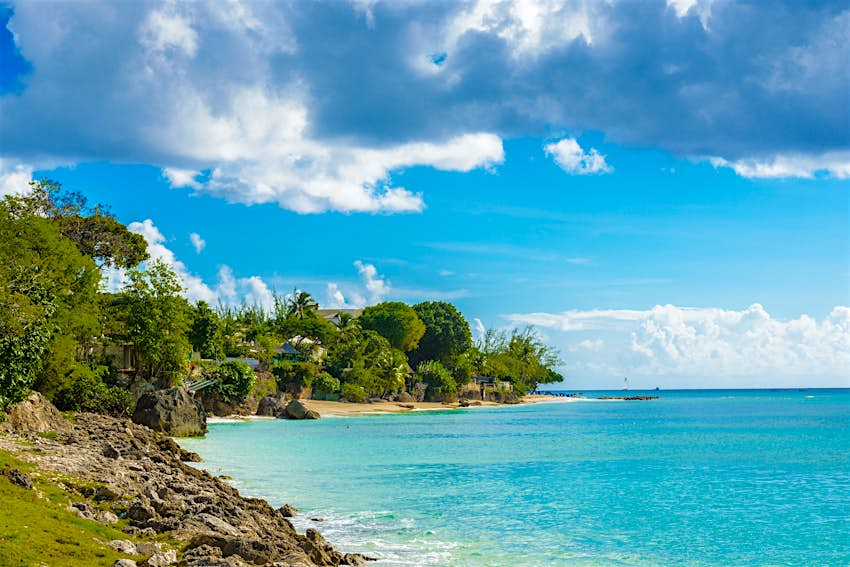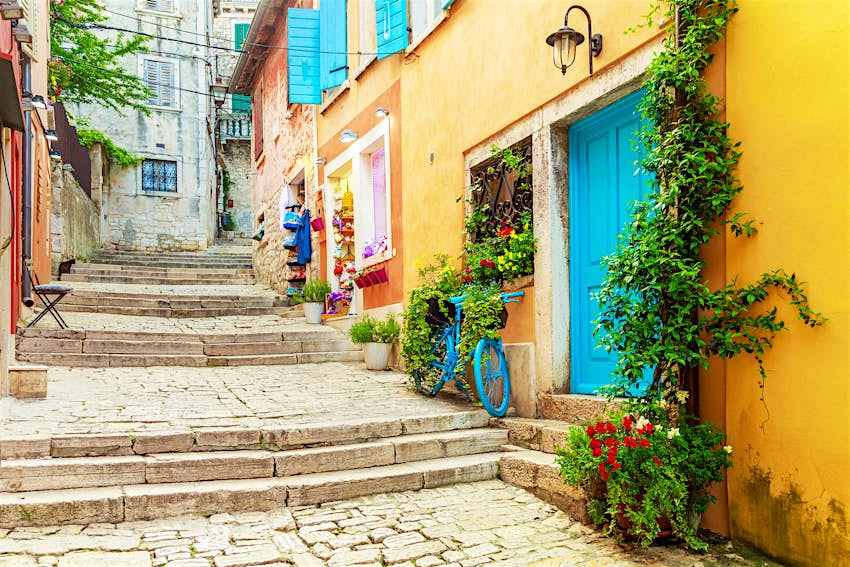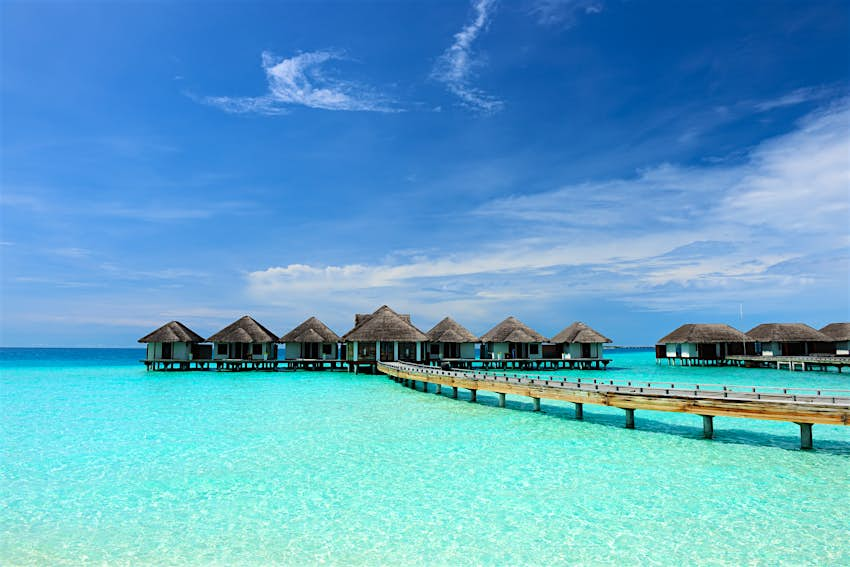The State Department recently lifted its five-month long “do not travel” advisory for all international destinations and returned to country-specific restrictions. While several nations, including much of Europe, remain closed to US travelers, a growing number of countries are reopening their borders to them.
Editor’s Note: This list was updated on October 20, 2020. Please check specific country sites for the most updated information before booking travel.
In August, the department returned to its previous system of “country-specific levels of travel advice”, which means it’s back to rating individual countries from levels 1-4 based on their current health and security situations. The decision was made in line with the US Centers for Disease Control and Prevention (CDC) and advisories are updated regularly as situations evolve quickly. But despite the removal of the sweeping travel ban, the department warns: “we continue to recommend U.S. citizens exercise caution when traveling abroad due to the unpredictable nature of the pandemic.”
Canada and much of Europe, Asia and Oceania are pretty much off-limits to US travelers. But in recent weeks some countries have begun to relax their border restrictions and are now allowing US citizens to enter provided they follow the public health guidelines of the local authorities. Travelers are also encouraged to download the Smart Traveler Enrollment Program (STEP) to receive travel and emergency alerts. If you do plan to travel, below is a list of where you can go now. But it’s important to note this is not a complete list and rules are quickly changing.
US travelers can visit Albania without the need to quarantine or prevent a negative COVID-19 test result, but they will be required to submit to health screening at the airport. “Travelers should be prepared for travel restrictions to be put into effect with little or no advance notice,” the state department warns.
Travelers must pre-register their visit on the country’s tourism board website and present proof of a negative COVID-19 test, taken no more than five days before travel. The British Overseas Territory is currently accepting online applications for visitors who would like to work remotely with new visa programs. See more here.
US travelers must “present a negative Covid-19-RT-PCR (real time polymerase chain reaction) test result, taken within seven days of their flight.” See more here.
Armenia is open to US travelers who take a COVID-19 PCR test upon arrival or self-isolate for 14 days.
Aruba is open to US travelers but they must be tested at the airport and provide requisite insurance coverage. Starting from September 24, travelers from Kentucky, Maryland, Minnesota, Missouri, Montana, Nebraska, North Dakota, Pennsylvania and Virginia, states deemed high-risk, will be required to present a negative COVID-19 result from a test taken between 12 and 72 hours before flying. The list of states who have to undergo enhanced testing is updated regularly. Aruba has also introduced the “One Happy Workation” program, which allows visitors to stay for a maximum of 90 days, and offers a series of deals and discounted rates at local accommodations.
US visitors must quarantine for 14 days upon arrival. They also must adhere to the country’s safety protocols which include presenting a “COVID-19-PCR Negative (Swab) Test” taken no more than 10 days prior to the date of arrival. See more here.
Bangladesh is open to US travelers but they must present a negative COVID-19 test result taken no more than 72 hours before travel and self-isolate for 14 days, even with a negative test result.

See Barbados’ requirements here.
Despite widespread mass demonstrations, US citizens can visit Belarus without any restrictions. Health screenings are in place at airports.
See Bermuda’s requirements here.
Cambodia is open to visitors provided they pay a $3000 deposit by cash or credit card for “COVID-19 service charges” at the airport upon arrival, and have $50,000 of travel insurance cover.
International flights between Colombia and the US resumed on Monday with incoming passengers required to present a negative COVID-19 test result.
Costa Rica initially opened to residents from just eight US states in September but will increase that to all US residents by Novmber. Tourists must present a negative PCR COVID-19 test result, taken no more than 72 hours before their trip. See full requirements here.

US travelers can visit Croatia, provided they they hold evidence of paid accommodation in the country. Travelers must provide evidence of a negative COVID-19 test result taken within 48 hours of arriving in Croatia. If they don’t have that, they must undergo a mandatory quarantine/self-isolation period of 14 days upon arrival in the country.
Th Dutch Caribbean island will open to residents of New York, New Jersey and Connecticut from November, with more states to follow. Tourists from these states must present their driver’s licence or state ID at the borders as proof of residence and present a negative PCR COVID-19 test result. See full requirements here.
See Dominica’s requirements here.
In August, the Dominican Republic introduced free COVID-19 insurance for travelers, including US citizens, and dropped mass testing at the borders. See more here.
US travelers must present proof of a negative COVID-19 PCR test taken no more than 10 days ahead of travel, or get tested upon arrival and quarantine while awaiting results. If traveling on to the The Galápagos Islands, travelers must take another COVID-19 test taken within 96 hours of arriving into Ecuador.
Travelers must present proof of a negative COVID-19 test taken no later than 72 hours before arrival. Travelers must present paper copies of the test result, digital copies will not be accepted. Temples, archaeological sites, and museums are open to tourists.
All visitors must present a negative COVID-19 test result before boarding their flight in addition to completing a 14-day quarantine upon their arrival.
Travellers must have a COVID-19 test 72 hours before the departure to French Polynesia, and international travel insurance is compulsory for every non-resident visitor
US citizens must present a negative COVID-19 test result from a test conducted no more than 72 hours before travel. Health screenings are in place in airports, and travelers must also undergo a second COVID-19 test upon arrival at a cost of $150 per person. The fee must be paid online and passengers must present proof of payment prior to boarding, according to the US Embassy.
The Spice Island is open to US tourists but has some requirements: visitors must present a recent negative COVID-19 test result; book a minimum of four-day reservation at approved accommodation for observation and quarantine, and undergo a second test after quarantine to travel the island. See more here.

All international visitors to the country must declare their COVID-19 status via an incoming flight form, will get temperature screened upon arrival and are required to quarantine for 14 days.
Incoming travelers must present a negative COVID-19 PCR test result.
US travelers can visit the country but nonessential travelers are asked to quarantine for 14 days and fill in a form indicating where they will stay for the duration of that time. The US Embassy in Ireland notes travelers should “restrict their movements” and “be prepared for travel restrictions to be put into effect with little or no advance notice.” Due to a surge in coronavirus cases, Dublin is on Level Three of the country’s five-level COVID-19 plan until October 9: restaurants and pubs are closed except for takeaway and outdoor service; museums, galleries and libraries are closed and nonessential travel is banned in the capital. The full details of the additional restrictions are available here
See Jamaica’s requirements here.
Travelers must present proof of a negative COVID-19 test result taken no later than 96 hours before arrival and undergo health screening. A nightly curfew is in place from 9pm until 4am and there are restrictions on interstate travel.

Incoming travelers present a with a negative COVID-19 test result taken within 72 hours of arrival.
US citizens must present a negative PCR test result no older than 72 hours on arrival, or a positive antibody test result and undergo health screening at the airport. According to the US Embassy in Montenegro, travelers must not have stopped, nor transited through, countries that are not permitted to enter Montenegro within the previous 15 days.
Morocco is open to travelers who have confirmed hotel reservations. Visitors are required to present a negative COVID-19 test that’s no more than 48 hours old upon arrival. Heavily touristed cities, including Marrakesh, Fez, Casablanca and Tangier, are still under a strict lockdown that started at the end of July and is in place until further notice.
Land crossings between the US and Mexico are closed until October 21 but visitors can arrive by plane. However, the CDC currently recommends travelers avoid all nonessential international travel to Mexico as the COVID-19 risk there remains high in places such as Colima, Nuevo León, Nayarit, Mexico City and Baja California Sur. Tourists may be subject to health screenings at airports.
Namibia requires visitors to present a recent negative COVID-19 test result upon arrival, and undergo a second test five days later.

Travelers must present a negative PCR COVID-19 test certificate for a test taken no more than 120 hours before their initial flight. The US Embassy recommends that travelers carry a printed copy of their negative test results “during all legs of their flights to Rwanda.” They must also take a second test and quarantine in a designated hotel for approximately 24 hours while awaiting their results.
See St Bart’s requirements here.
See St Lucia’s requirements here.
See St Maarten’s requirements here.
Serbia is open to US citizens but they must fill out on online health assessment before traveling and a second assessment 10 days into their trip.
Travelers who arrive in the country must sign a Pre-Arrival Form. All travelers must present a negative COVID-19 test result taken within five days prior to travel. They will also need to quarantine in an approved hotel for five days and undergo a second test on the fifth day.
US citizens must complete a mandatory 14-day quarantine when entering South Korea. The US Embassy advises that travelers will also experience “some combination of temperature screening, health questionnaires, and/or COVID-tests.” All arriving passengers are required to download and respond to daily questions through the Self-Diagnosis Mobile App for 14 days.
Travelers must provide a negative test result for COVID-19 upon arrival and may be subject to health screening.

Travelers arriving in Turkey will be required to complete an information form and will be checked for symptoms. Anyone suspected of having COVID-19 will be transported to a hospital for examination. Curfews remain in place in some areas but these do not apply to foreign tourists though the US Embassy warns “local authorities may put in place additional COVID-19 restrictions, including curfews, with little or no advance notice.”
See Turks and Caicos’ requirements here.
Passengers must arrive with a negative PCR COVID-19 test certificate for a test conducted within 72 hours prior to arrival in Uganda, and undergo a health screening upon arrival, including a temperature check and assessment for other signs or symptoms. In its commitment to keep people safe, Uganda has received the World Travel and Tourism Council’s Safe Travels Global Safety & Hygiene Stamp for complying with enhanced health and safety rules. See full requirements here.
In Dubai, visitors are required to present a negative COVID-19 test result, taken within 96 hours of arrival, and have medical travel insurance to cover any illness-related expenses. While in Abu Dhabi the rules are more strict; visitors are required to quarantine for 14 days and wear an electronic wristband to ensure quarantine adherence, in addition to providing a negative test result.
US citizens arriving into the UK are required to self-isolate for 14 days. There are fears that a second wave is incoming due to a recent surge in new daily coronavirus infections. As a result, new regional lockdown measures have been applied across the country.
This article was first published on September 22 and updated on October 20, 2020.
